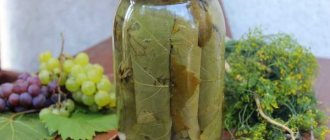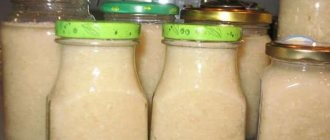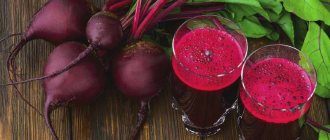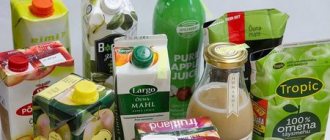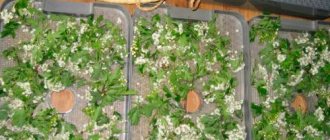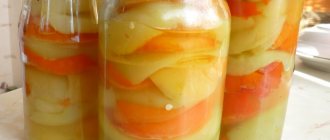General recommendations
To properly store the plant, pay attention to the recommendations and general rules:
- Low temperature. For storing all medicinal plants, a relatively low temperature is a prerequisite. Because of this, it is recommended to store aloe products in the refrigerator.
- Darkness. Artificial and natural light negatively affects the valuable properties of the plant, so you need to pay attention not only to the darkness of the place, but also to the opacity of the storage container.
- Tightness. The container or bags in which you will place the aloe must be hermetically sealed and not allow oxygen to pass through, upon contact with which they will begin to oxidize and deteriorate
- No other odors. This factor can be considered as an addition to the previous one, but it is also recommended to take it into account.
Preparatory moments
It turned out that there are several subtleties that need to be taken into account at the initial stage:
- As a rule, healing juice is extracted from plants that have reached 3 years of age. Younger flowers are not suitable for this, as are older ones, older than 7 years.
- Before cutting off aloe leaves, it is recommended not to water the flower for a week or a week and a half - for this succulent such drought is short-term and will not cause harm. But, its parts will be stocked with valuable substances and the juice will become even more healing.
- You should take only the lower leaves, the length of which is more than 20 cm; they are particularly fleshy. In addition to foliage, shoots of 15 cm or more are also used.
- They should be cut carefully, using scissors or a knife with a sharp blade.
- It is recommended to rinse the leaves with cool water and dry for 20–30 minutes.
- Before using plant materials, it is recommended to keep them in the refrigerator for several days. The leaves are wrapped in foil or dark paper and sent into the cold for one to two weeks.
This is interesting! The results of laboratory studies conducted by the famous Soviet ophthalmologist V.P. Filatov, we were amazed! It turned out that when a plant or its parts find themselves in uncomfortable conditions - darkness and cold, they begin to produce biogenic stimulating substances.
The juice obtained from the plant kept in the cold is considered biogenic, its medicinal value is higher than that of juice prepared without this procedure.
Preparation for storage
Preparing leaves for long-term storage is an important step that cannot be neglected. If you want to avoid damage to the plant and preserve all its properties, pay attention to its proper collection and preparation.
To do this, follow the algorithm:
- A week before the planned cutting, stop watering the plant.
- When the soil is dry enough, cut off the leaves at the very base with a sharp knife. Resume watering the remaining plant in the ground.
- Gently rinse and dry the leaves. You don't need to press or press hard on them to avoid juice release.
- Place the dried leaves in prepared packaging and place in the refrigerator.
Collecting juice from it can also be considered as preparing aloe for storage. If you will use it in this form, peel the leaves, grind in a blender and strain the juice through cheesecloth. Also put the resulting liquid in the refrigerator.
Storing aloe leaves
Storing valuable leaves is a question that arises among many girls who want to use them for home cosmetic procedures or for medical purposes.
There are two ways in which the plant fully retains its properties and remains suitable for use, but they have different shelf life. Let's take a closer look at them.
| 1 | At room temperature | More details |
| 2 | In a refrigerator | More details |
1
At room temperature
When deciding to leave aloe at room temperature, pay attention to following the recommendations for choosing a place:
- It should be dark.
- It must have a stable temperature - drawers and cabinets near the oven and stove are not suitable for this.
- Aloe must be stored in an airtight container, otherwise with constant contact with oxygen it will begin to oxidize, dry out and deteriorate.
If you follow all the recommendations, you can store aloe at room temperature in its original state for no longer than three days.
2
In a refrigerator
The refrigerator is the best place to store aloe, in which it retains most of its healing properties and does not spoil for a relatively long time.
Before placing aloe leaves in the refrigerator, you need to prepare them according to the scheme described above, and then wrap them several times in cling film and put them in the refrigerator. You can replace the cling film with a sealed vacuum bag, which will prevent the penetration of oxygen into its contents, which will oxidize and spoil the plant.
It is not recommended to use ordinary cellophane bags due to their lack of tightness.
It is recommended to place packaged leaves on the top shelves of the refrigerator or in the compartment for vegetables and fruits, since the temperature is maintained there at about 4-7 degrees Celsius.
Temperatures that are too low can reduce the value of the leaves. Refrigerator doors should also not be used for these purposes, which is associated with significant temperature fluctuations in them.
Aloe can be stored in the refrigerator for up to a month, and every day its benefits only increase, which is associated with the gradual evaporation of moisture and an increase in the concentration of juice.
Diagnostic methods
The main and most accurate method for detecting gastroesophageal reflux disease is esophagogastroduodenoscopy. This technique is an endoscopic examination of the mucous membrane of the esophagus using a special probe, at the end of which there is a camera. Information from the camera is transmitted to the monitor and assessed by the doctor in real time. During the study, it is possible to identify foci of the inflammatory process on the mucous membrane, the presence of erosions and ulcers, hiatal hernias, polyps, strictures, as well as foci of malignant degeneration.
To assess the contractility of the lower esophageal sphincter, a functional study such as manometry is used. If a disease such as Barrett's esophagus is suspected, it is recommended to perform gastroscopy with the collection of fragments of the mucous membrane (biopsy). Less often, radiography is used to diagnose GERD. This diagnostic procedure does not reveal pathological changes in the mucous membrane of the esophagus, with the exception of ulcers and hernias.
Juice storage
Aloe juice is a liquid extract from the leaves of the plant, which is most often used in home cosmetic procedures or in the preparation of medicinal solutions.
You can get aloe juice in two ways:
- The leaves are crushed in a blender and then strained using gauze.
- The plant is kept in warm water for a couple of minutes, and then the juice is squeezed out of it.
The juice should be poured into a glass jar or bottle made of durable and dark glass, and then placed in the refrigerator. Only in this state can you preserve a valuable product.
The juice is stored much shorter than the leaves of the plant themselves - if all recommendations are followed, it can only be used within 2-3 days. If you need a squeeze of leaves for use, it is better to store them in the refrigerator in their original state, and if necessary, take them out and make juice from them for a couple of uses.
Caring for a home healer
Considering the universal use of aloe juice in folk medicine, this plant can be called a valuable supplier of biologically active components. This means that the flower deserves good treatment and is worth taking care of. But how to do this if the leaves of a green pet are regularly cut off for the benefit of the owner?
You can adhere to the following recommendations:
- You cannot cut off the tips of the leaves; the succulent juice will begin to flow out through the hole.
- The plant should be cared for carefully. When removing dust and dirt from foliage, you need to act carefully, since even small scratches can cause it to dry out.
- It is recommended to cut the leaves closer to the trunk.
- If preparing juice or multi-component products is a planned event, then it is better to do it in winter or early spring.
Other storage methods
Storing aloe in the form of juice or leaves in the refrigerator and at room temperature are not the only ways that will help you preserve the value and benefits of the plant.
There are several other commonly used methods that can also be used for cosmetic or medical purposes. Let's take a closer look at them.
| 1 | Preparation of tinctures | More details |
| 2 | Making ointment | More details |
| 3 | Drying | More details |
| 4 | Freezing | More details |
1
Preparation of tinctures
Tinctures are an effective option for long-term storage of aloe leaves, which preserves many of their beneficial components and prevents them from deteriorating for several years.
There are two popular recipes for aloe-based tinctures: Alcohol based
Mix aloe leaf juice with vodka in a 4:1 ratio and pour the resulting liquid into a dark, thick glass bottle. Place it in the refrigerator for at least 10 days to infuse, after which you can leave it there or put it in another dark and cool place. The tincture can be stored for up to 2-3 years.
On honey
Mix natural liquid honey and aloe leaf juice in equal proportions, pour into a dark and durable glass bottle and put in the refrigerator. After 4 days, the tincture will also be ready for use. It can be stored for up to a year.
Tinctures can also be used for cosmetic or medical purposes, the main thing is
to first make sure that they are safe and that you do not have an allergic reaction to them. To do this, apply a small amount of the solution to the inner surface of the elbow for 20 minutes and watch for signs of allergies and irritation.
2
Making ointment
Aloe can also be used for medicinal purposes in the form of an ointment if properly prepared.
To do this, follow the algorithm:
- Aloe leaves are cut, prepared, wrapped in cling film and put in the refrigerator for 2 weeks.
- After 14 days, they are peeled and then ground in a blender.
- Using gauze, the juice is squeezed out of the leaves, which is then poured into a dark glass jar and put in the refrigerator for another day.
- The juice is diluted with any cold-pressed oil (vegetable, castor, eucalyptus) in a ratio of approximately 2:1.
- The resulting mixture is poured into a bottle made of thick dark glass and placed in the refrigerator.
If properly prepared, the resulting mixture can be stored for up to a year and used for medical purposes.
3
Drying
Aloe leaves can also be dried, but you only need to use a special dryer for this, which will quickly rid the plant of excess moisture.
Dried leaves should be placed in cloth or paper bags and stored in a dark, cool and dry place. The optimal temperature in it should be about 17-20 degrees Celsius. Dried aloe can be stored for about two years.
4
Freezing
Another method of long-term storage of aloe, which will ensure that the plant remains in its original condition for up to a year. However, keep in mind that after defrosting the leaves will become watery and lose some of their beneficial properties.
You can freeze both the leaves themselves and the juice from them. For convenience, you can pour it into ice cube trays and, after freezing, put it in one bag. This way you can defrost the required amount of juice in portions.
Aloe should be stored in a compartment with vegetables, berries, fruits and other products that do not smell strongly.
For other ways to store aloe, also watch the video below:
How to use
Aloe juice is widely used as an external antiseptic and bactericidal agent, but is also equally valued as an oral medicine for a number of diseases.
- For facial skin. The uniqueness of this product is that it is suitable for all skin types. Aloe juice can be used by girls and boys for acne and pimples. It can also be used by mature women with signs of aging skin. The juice is suitable for dry, oily and mixed skin types. The product is used in its pure form, but is also actively used for the manufacture of creams, shampoos, gels, soaps, and lotions. Natural aloe juice in cosmetology is an expensive component. That’s why women so often prefer to grow the flower themselves and make homemade cosmetics from it (read more about using aloe for the face).
- For hair. Agave juice stimulates growth, nourishes hair follicles, restores the structure of damaged hair, and eliminates dandruff. For serious hair problems (severe hair loss, baldness, bacterial and fungal infections of the scalp), not only external use of the juice in the form of masks and tonics is recommended, but also internal use. Most often, aloe injections are prescribed, which need to be injected over a long course (at least 30 injections). Read more about aloe injections here. For external use, take fresh juice in its pure form. It is also added to masks for various hair types (read more about aloe for hair).
- For eyes. It is known to use fresh aloe juice to treat eye diseases. They treat various inflammations - conjunctivitis, keratitis, iritis, blepharitis. The product restores the optic nerves, relaxes the eye muscles, prevents progressive myopia, the development of night blindness, and glaucoma. Is it possible to drip fresh aloe juice into the eyes and how to do it correctly? It is better to discuss this with your ophthalmologist. There are options for preparing aloe juice with honey and apple juice. Such products can be dangerous to your eyesight. Eye drops “Aloe according to Filatov’s method” and “Aloe extract according to Fedorov” are considered safe and effective in ophthalmology.
- For weight loss. How can aloe juice help you lose weight? Firstly, it has a laxative effect, promotes rapid cleansing of the intestines and works on the principle of fiber (“broom” for the intestines). Secondly, it stimulates the production of necessary enzymes, the release of the required amount of bile, and normalizes digestion and appetite. Taking aloe is especially useful during protein diets, when digestion becomes difficult. Thirdly, the juice of the plant affects the metabolism in the body. It is known that with age, metabolic processes slow down and weight is gained faster. Therefore, the juice is beneficial for women and men after 40 years. Officially, in dietetics, aloe is not classified as a weight loss drug. But in popular use, the juice is often drunk for weight loss.
- For the digestive organs. Flower juice is useful for diseases of the stomach (gastritis with low acidity, ulcers), liver, pancreas, large and small intestines. The product helps with constipation, restores and stimulates appetite, and promotes the production of enzymes. It is also known to be a reliable remedy for bacterial intestinal infections.
- For respiratory diseases. This home remedy will help with runny nose and cough during colds, flu, ARVI. It is also prescribed for bronchitis, pneumonia, tuberculosis, and asthma. Recipes with honey and Cahors are especially useful for respiratory diseases. Read more about the treatment of aloe with honey in our other article.
- For ENT diseases. Aloe juice is a natural antiseptic and antibacterial agent. When diluted, it can be used to treat the nasal passages for sinusitis, tonsils and throat for sore throat and tonsillitis, and the oral cavity for stomatitis. Treatment with aloe juice for bacterial infections will be effective: it neutralizes streptococci and staphylococci, it is often used as an adjuvant in antibacterial therapy. In addition, the product also helps with fungal infections of the mucous membrane.
- For rheumatic and orthopedic diseases. Fresh agave juice is taken over a long course for rheumatism, arthrosis, arthritis; this medicine relieves swelling and inflammation in the joints. For joint and muscle pain, apply compresses and lotions with the addition of honey, decoctions of medicinal herbs, and alcohol.
For children, aloe is recommended after 12 years of age, and only after consultation with a doctor. External use is also acceptable at a young age. You can drip the diluted juice into your nose when you have a runny nose or gargle. Also, the juice and pulp heal wounds, cuts, scratches, and burns well.
Storage errors
Despite the fact that there are not many rules for storing aloe, many still encounter the fact that the plant begins to deteriorate, rot and fade. Accordingly, at this time it loses all its beneficial properties.
This is usually due to the following storage errors:
- Storage in a plastic bag. Such packaging cannot be called airtight, since it allows air to enter the product and leads to its rapid oxidation and spoilage.
- Storage in refrigerator doors. Constant temperature fluctuations in this zone also negatively affect the shelf life of the plant.
- Watering the pot of aloe just before cutting it. High water content in the leaves reduces their benefits as well as their shelf life.
- Storing aloe at room temperature without additional packaging. In the air, aloe leaves quickly lose moisture, dry out and lose all their valuable properties, so you can preserve the plant in this way for no longer than a few hours.
In order to use all the benefits and value of the plant, it is important to pay attention to its proper storage and not allow it to deteriorate or dry out, following all recommendations for the preparation and placement of aloe.
Answers to popular questions
How long can aloe be stored in the refrigerator?
The leaves are stored in it for up to a month, the juice for up to 3 days.
How long can you leave aloe at room temperature?
If you put it in an airtight container and leave it in a dark place - up to two days. Leaves will not last more than a few hours if left on the table.
Do I need to clean the leaves before storing?
No, leave them with the peel on, this way the plant will last longer.
What container is best to pack aloe?
In glass or enamel with a hermetically sealed lid. However, for complete sealing, it is better to simply wrap the plant with cling film.
Is it possible to save for future use?
Storing juice is possible and there are various ways to maintain it in a suitable condition, but in all cases certain conditions must be observed:
- No light , otherwise all the beneficial properties will soon leave the juice, and it, in turn, will become unusable.
- A sealed container made of dark glass, which, firstly, will not allow light to penetrate, and secondly, will prevent oxidation under the influence of oxygen.
- Low temperature , since heat has a destructive effect on beneficial substances.
These recommendations are suitable for both fresh aloe juice and tinctures based on it.
You can read how to prepare, use and store the juice of this flower at home here.
